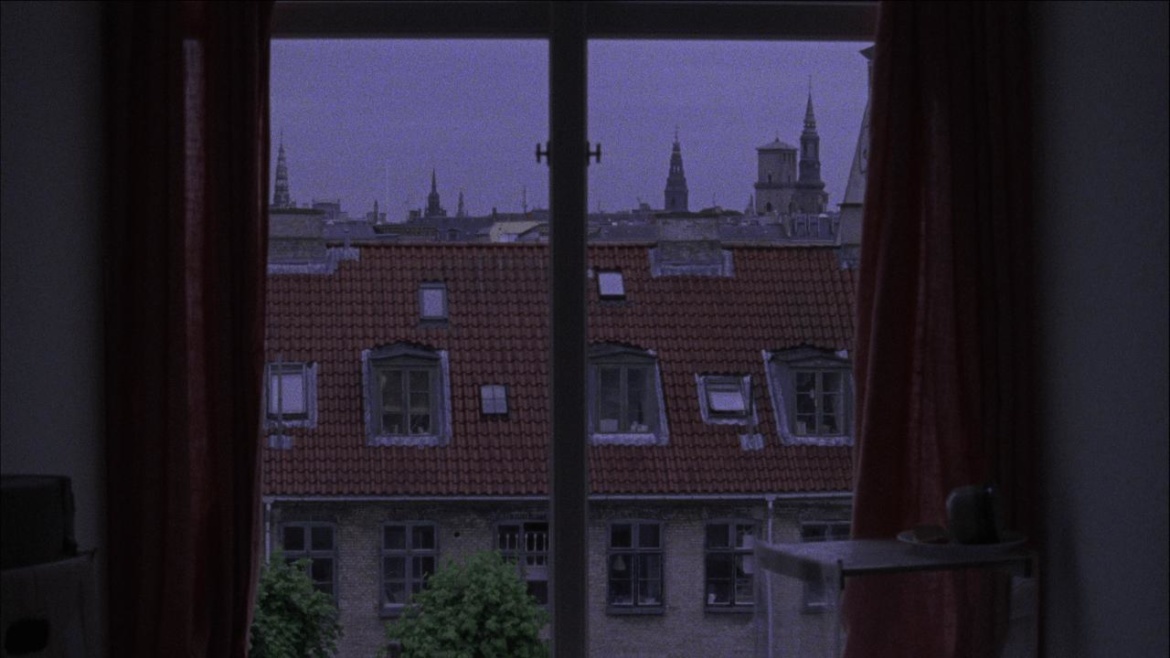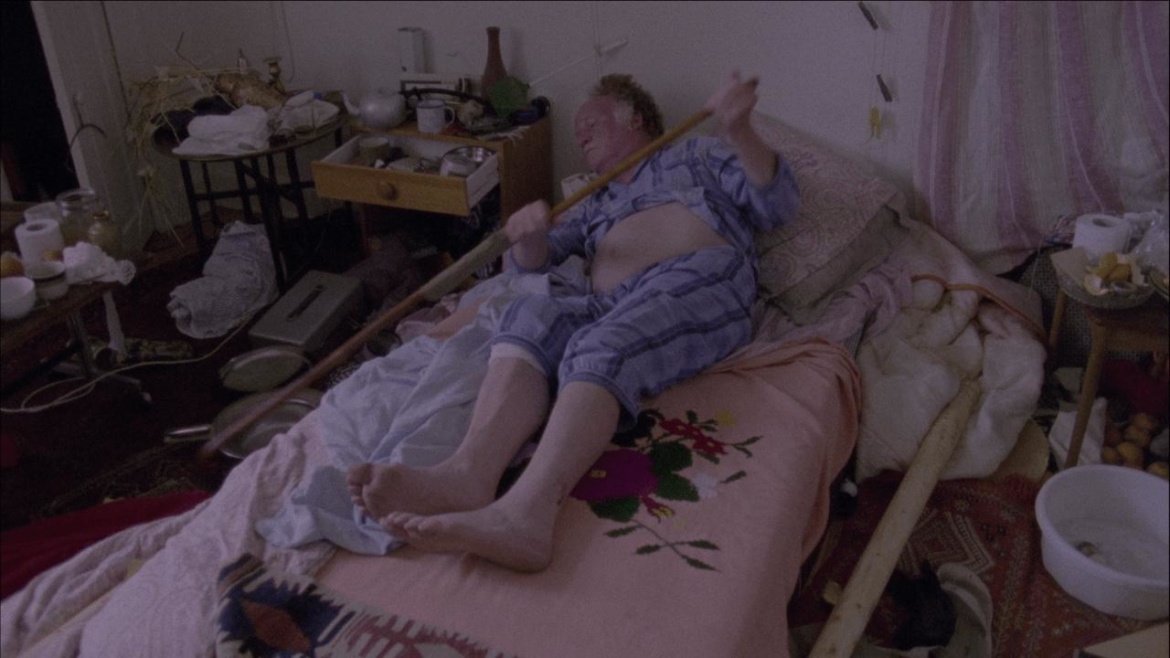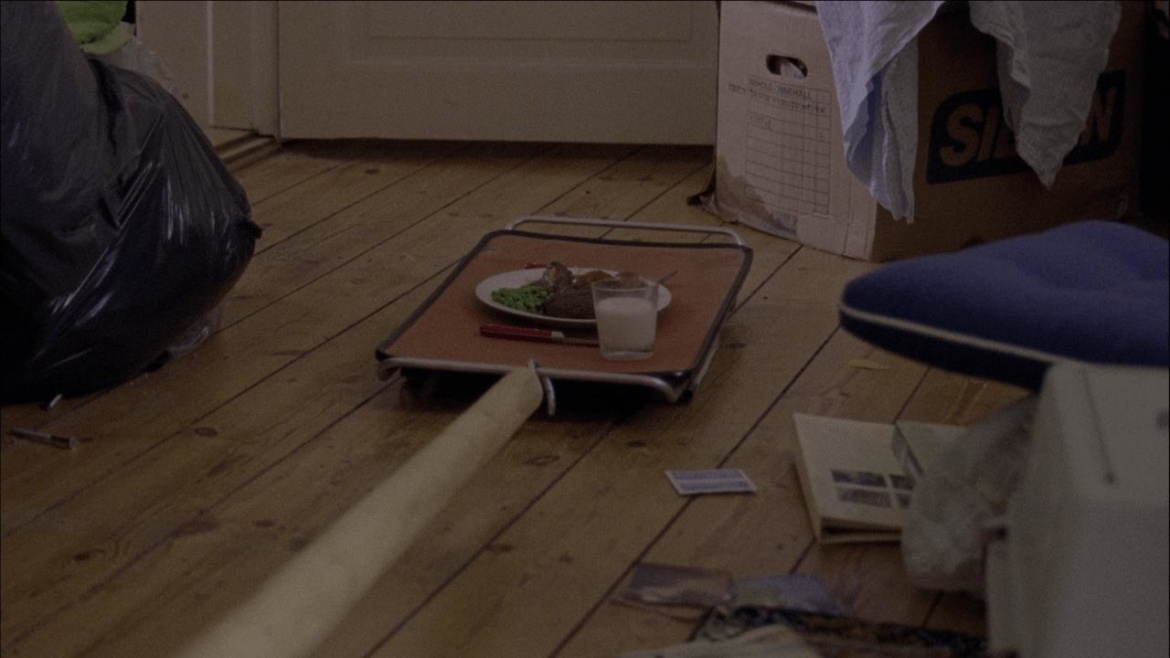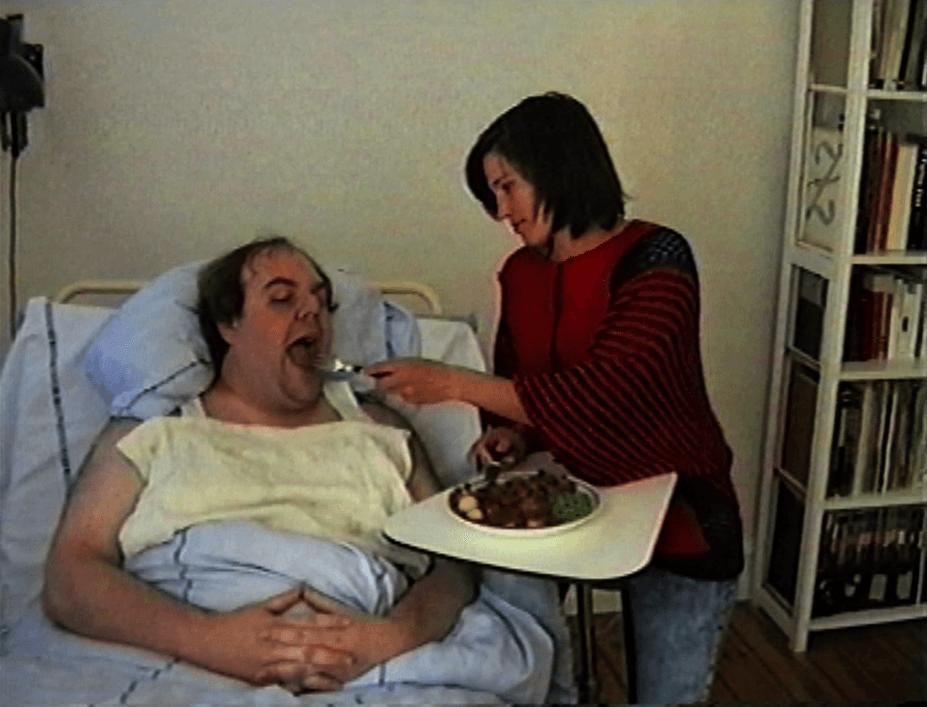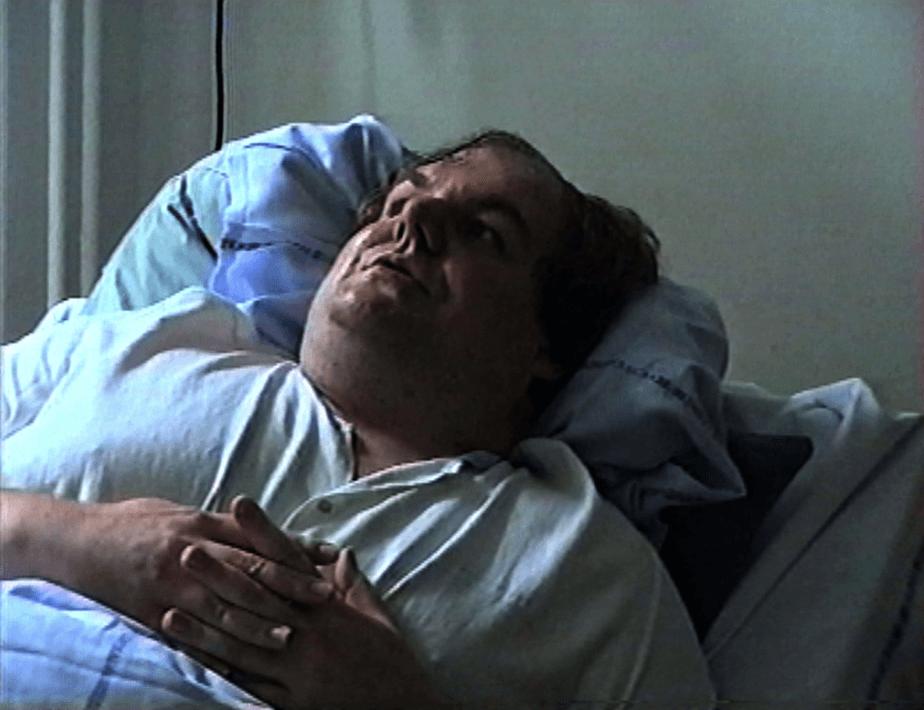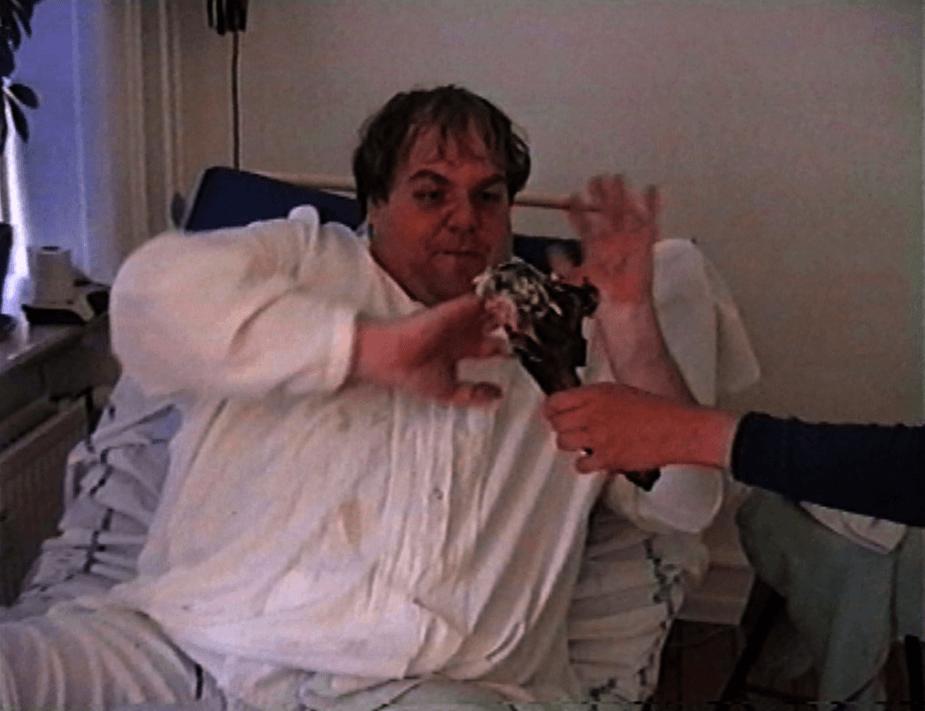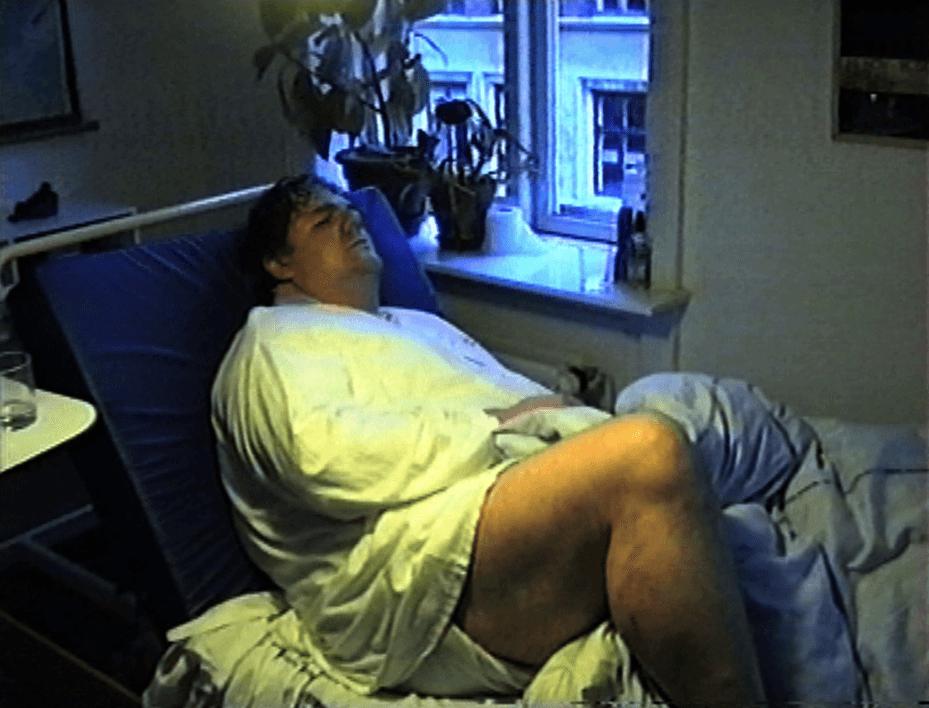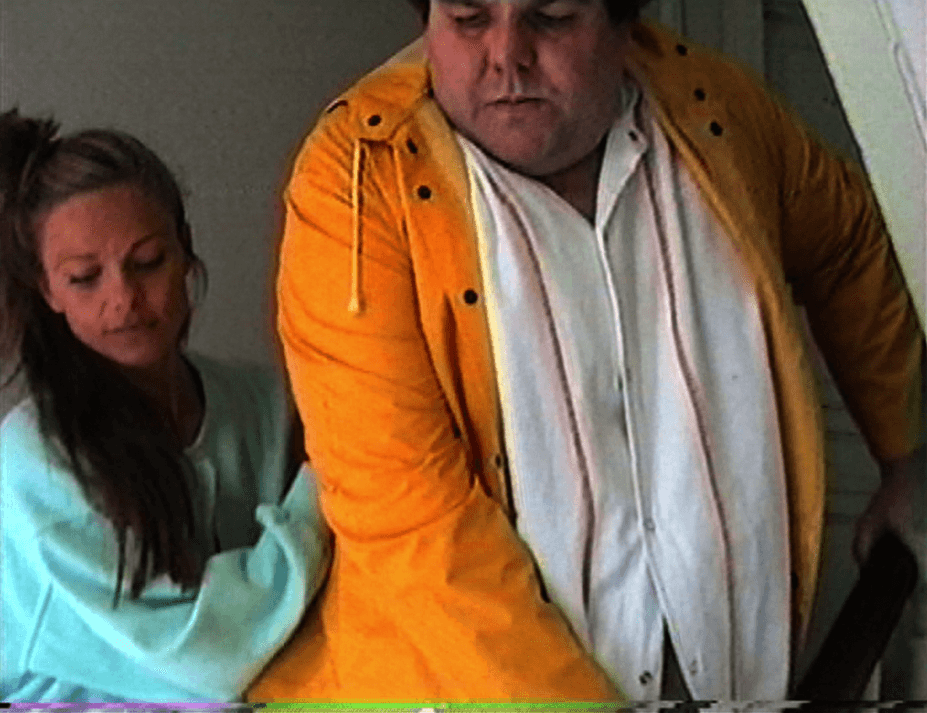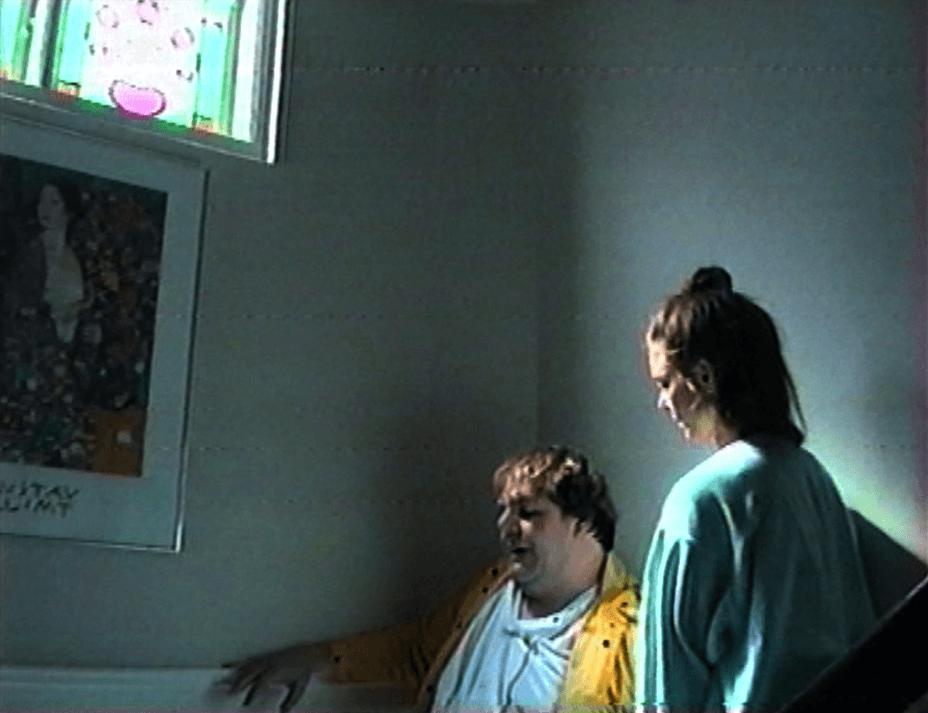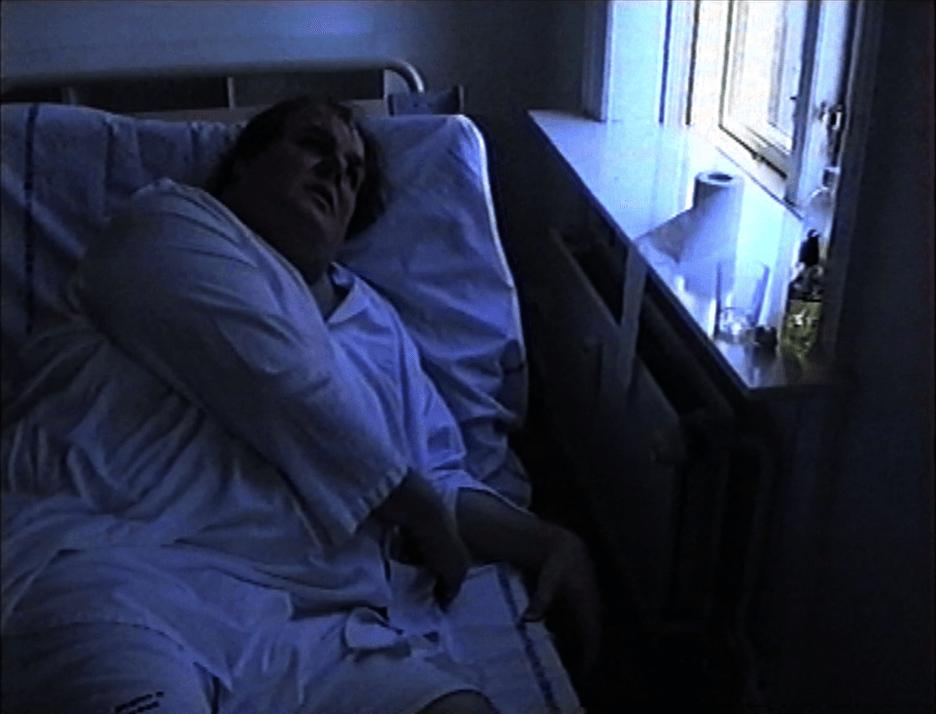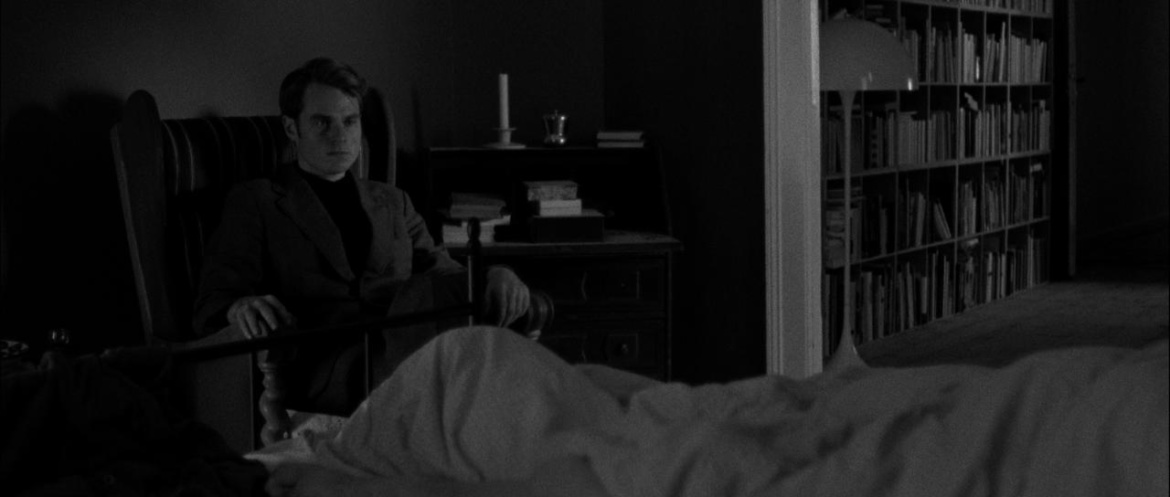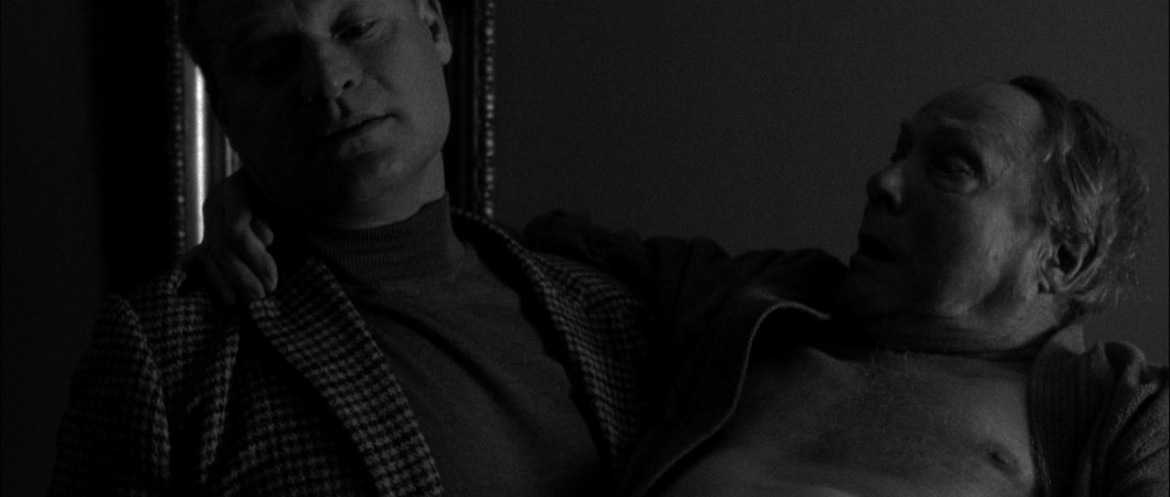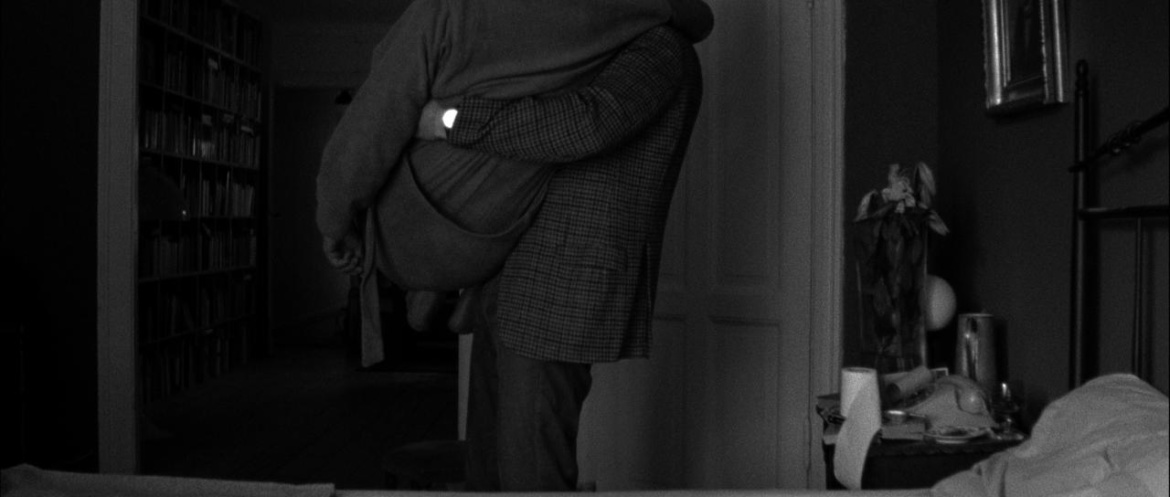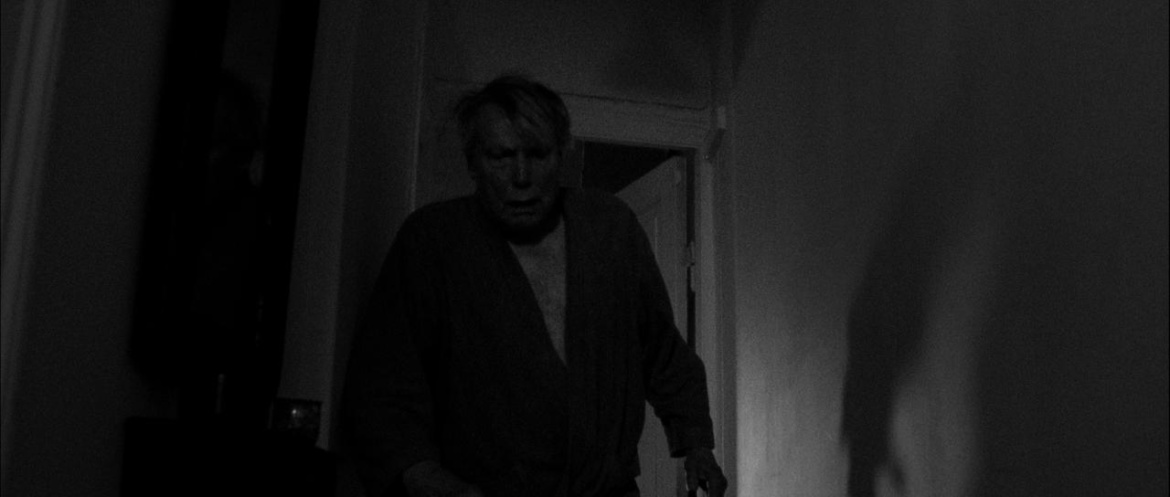The Bedridden Triptych – Contentment, Making Something of Oneself, Losing / Three-channel installation / 16 mm and VHS, 4:3, 16:9, cinemascope, 2013, 60 minutes
The state of being bedridden.
What allows for this phenomenon to occur? Indolence, poor health, old age? It can be hard to ascertain with certainty. In a sense one could say that life allows it to occur.
Suppose there is something eerily comical about the life of a person who resigns himself to this fate. Is there some amusement to be had as spectators to the ever churning mind of someone left to his own devices? Could it make us smile? Possibly.
But if we ourselves were to be put in this position, imagine the horror!
Through its references to historical film language constructs, the three films – as a combined whole – create an amalgamation of an existential cul-de-sac.
A dead end that has become the norm for the old, the unlucky and the ill in the industrialized countries of the Western hemisphere. It’s what lies in waiting for us if we live long enough.
From the CPH:DOX catalogue:
A practitioner, a prophet and a poor, tortured soul. Three protagonists, who for more or less articulate reasons have decided to spend their lives in bed, on the margin of the Danish welfare state – isolated from the world, which as the ‘Prophet’ puts it while he is being cared for by the municipality’s home carers, is nothing but a grand illusion.
Deniz Eroglu’s self produced film is structured as a triptych with three parts, which in spite of their large formal differences share a black-humoured , Beckett’esque view of the soaring soul’s troubles with the often extremely tangible prison of the body. Two of the segments are shot on 16 mm, while the more talkative center segment is shot directly on old VHS tapes and presented as one of those documentary ‘alternative world’ programmes that you could catch on TV after midnight in the 1980’s.
A film, whose director obviously spent his formative years in the company of everyone from Kafka, Orson Welles and Ingmar Bergman to ‘vidéo brut’ and conceptual film of the kind he has started to produce himself.

